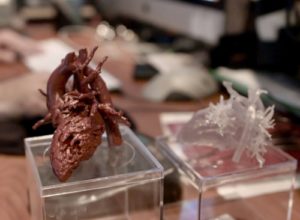Technology is yet to give a completely new definition to indoor plants. Now, along with lamps, researchers are able to make even the plants glow. Engineers from the MIT have taken a critical first step to turn such a vision into reality. This is done by embedding some specialized nanoparticles into the leaves of the watercress plants. These particles induce the plants to give off dim light for about four hours. These researchers believe that further optimization in this field will make the plants bright enough to illuminate an entire workspace.
To create the illuminated plants, the team:
Selected luciferase, the enzyme that gives the fireflies their glow.
Luciferase acts on a molecule called the Luciferin, making it illuminated.
Another molecule, called co-enzyme A helps this process by removing a reaction by-product that can inhibit luciferase activity.
The MIT team combined these three components into a different type of nanoparticle. These nanoparticles were in turn used in the plants. These plants could easily emit light and glow for 45 minutes. With some further study, the team progressed in this research to extend the time up to 3.5 hours. The light generated by these plants currently is about one-thousandth of the amount required to read. The researchers still believe that they can boost the intensity as well as its duration.
For future advancements in this technology, the researching team is working to develop nanoparticles spray onto the plant leaves. This spray will make the leaves to emit light, transforming the trees and other large plants into light sources. The team is also working on ways that can turn this light off by adding nanoparticles carrying a luciferase inhibitor. This way, the team could eventually create plants that shut off their light emission in response to the environmental conditions such as sunlight.







